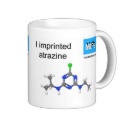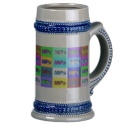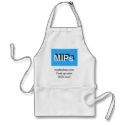|
|
Reference type: Journal
Authors: Xu SF, Li JH, Chen LX
Article Title: Molecularly imprinted polymers by reversible addition-fragmentation chain transfer precipitation polymerization for preconcentration of atrazine in food matrices.
Publication date: 2011
Journal: Talanta
Volume: 85
Issue: (1)
Page numbers: 282-289.
DOI: 10.1016/j.talanta.2011.03.060
Alternative URL: http://www.sciencedirect.com/science/article/pii/S0039914011002657
Abstract: Controlled/living free radical polymerization (CLRP) has been accepted as an effective technique in preparation of polymers because of its inherent advantages over traditional free radical polymerization. In this work, reversible addition-fragmentation chain transfer (RAFT) polymerization, the ideal candidate for CLRP, was applied to prepare atrazine molecularly imprinted polymers (MIPs) by precipitation polymerization. The resultant RAFT-MIPs demonstrated uniform spherical shape with rough surface containing significant amounts of micropores, leading to an improvement in imprinting efficiency compared with that of the MIPs prepared by traditional precipitation polymerization (TR-MIPs). The maximum binding capacities of the RAFT-MIPs and TR-MIPs were 2.89 mg g-1 and 1.53 mg g-1, respectively. The recoveries ranging from 81.5% to 100.9% were achieved by one-step extraction by using RAFT-MIPs for preconcentration and selective separation of atrazine in spiked lettuce and corn samples. These results provided the possibility for the separation and enrichment of atrazine from complicated matrices by RAFT-MIPs
Template and target information: atrazine
Author keywords: Molecularly imprinted polymers, atrazine, reversible addition-fragmentation chain transfer, precipitation polymerization
|


 atrazine template mug ball and stick model
atrazine template mug ball and stick model







 multi MIPs logo beer stein
multi MIPs logo beer stein







 mips logo apron
mips logo apron






